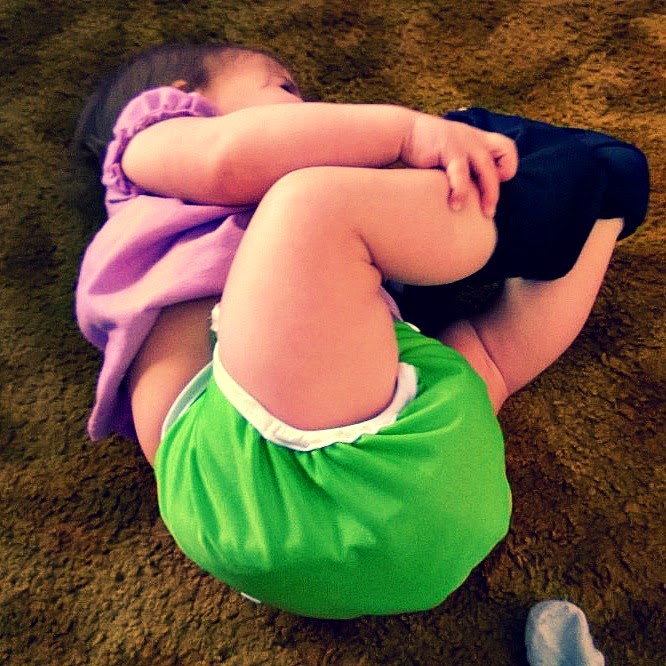Thinking about making your own baby wipes? Then do it!
It is easy, cheap, and wonderful for baby's behind.
Besides, if you are using cloth diapers, it just makes sense. You can sew your own wipes, or just cut up some old t-shirts into squares--any natural fabric, like cotton or muslin will work well. If you prefer, you can also use paper towels with this solution, but I find they don't do as good of a job cleaning up poopies as cloth does.
Most of the ingredients can be easily obtained from pharmacies, grocery, department, or online stores. Some ingredients are easily made at home as well:
- Grow your own Aloe plants for the Aloe juice.
- Make your own Calendula and Witch Hazel extracts (tutorial here).
Homemade Baby Wipe Solution (Print)
12 cups water
2 cups aloe vera juice
1/2 cup calendula extract
1/2 cup vegetable glycerin
1/2 cup witch hazel extract
1/2 Tablespoon sunflower oil
16 drops tea tree essential oil
Combine all ingredients in a gallon jug and shake well. Shake solution before each use.
The solution can be poured into a spray bottle and sprayed onto a cloth or directly on baby. Alternatively, the solution can be poured over wipes in a closed container for "pre-moisted" wipes.
12 cups water
2 cups aloe vera juice
1/2 cup calendula extract
1/2 cup vegetable glycerin
1/2 cup witch hazel extract
1/2 Tablespoon sunflower oil
16 drops tea tree essential oil
Combine all ingredients in a gallon jug and shake well. Shake solution before each use.
The solution can be poured into a spray bottle and sprayed onto a cloth or directly on baby. Alternatively, the solution can be poured over wipes in a closed container for "pre-moisted" wipes.
I have found that this wipes solution, in combination with plenty of "naked time," is a great preventer of diaper rash. Please comment if you have any questions!

Baby cleaning is a huge task and you also have to take care of your baby health. I like the article but frankly speaking don't get time to make these things.
ReplyDeleteThanks for sharing! I am on a quest to make all my own toiletries right now, and I am going to give this recipe a shot! Keep doing what you do, mami! Great job :-)
ReplyDeleteOkay, now this is just incredible! I had no idea one could make their own baby wipes. I learned something new today.
ReplyDelete